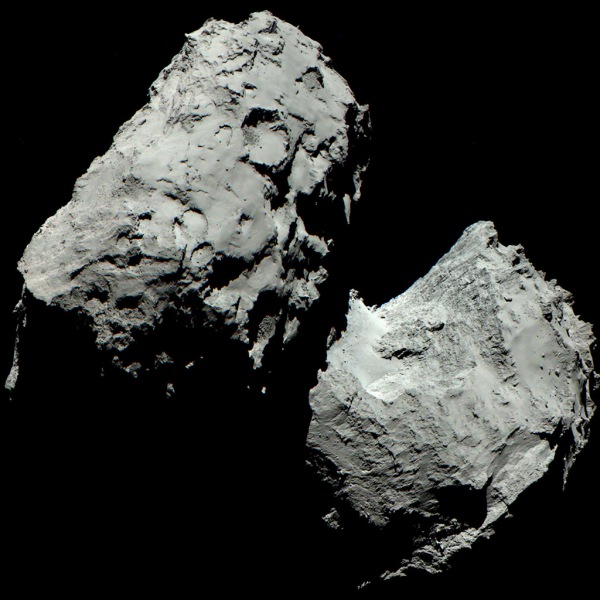
Many of the images we’ve been seeing of the craggy surface of comet 67P/Churyumov-Gerasimenko, as incredible as they are, are still monochrome. Now Rosetta’s OSIRIS team has released a true-color image of the comet taken with it high-res science imaging instrument… but even then it’s still pretty much grey.
“As it turns out, 67P/C-G looks dark grey, in reality almost as black as coal,” said OSIRIS Principal Investigator Holger Sierks from the Max Planck Institute for Solar System Research (MPS).
According to a post on the Rosetta blog:
Long before Rosetta’s arrival at the comet, ground-based telescope observations had shown 67P/C-G to be grey on average, but it was not possible to resolve the comet and see any surface details. However, now that OSIRIS is able to take images from close-up, scientists are surprised to see an extremely homogeneously colored body even on a detailed scale, pointing at little or no compositional variation on the comet’s surface.
What’s even more curious than just the lack of color on 67P is the absence of any exposed ices: any ice on the surface should appear brighter in the blue filter, leading to the appearance of blue-ish patches. This image contains no indication of any such icy patches, consistent with observations made by some of Rosetta’s instruments.
The images were taken in red, green, and blue color filters on August 6, 2014 from a distance of 120 km (74.5 miles) from the comet.
An image of comet 67P was released previously as part of a report to be given during the Fall AGU meeting showing the comet with a brick-red coloration. But that was acquired with OSIRIS’s full spectrum of color bands and stretched to emphasize surface morphology; to our eyes it would really appear quite monochromatic. (Read more here.)
Read more on the Rosetta blog here.
And if you didn’t get the reference I made in the title, click here. 🙂
The cartoon was more fun than the not-so-color picture – thanks for linking to that gem!
LikeLike
Reblogged this on vitonunyeri.
LikeLike